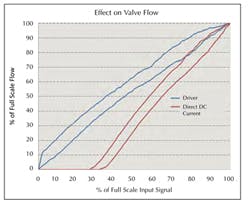Web-first: Proportional valve driver simplifies valve-control applications
Edited by Mary C. Gannon, senior associate editor
Clippard’s new EVPD valve driver integrates with existing machine controls and is available as s stand-alone PCB or enclosed in a housing.
The new EVPD proportional valve driver from Clippard Instrument Laboratory Inc. is designed for use as a plug-and-play interface between Clippard’s EVP series proportional control valves and PLCs and other controls. Common uses include in laboratories and OEM product development. They can be customized to fit OEM applications and integrate easily with existing machine controls while offering user-adjustable parameters. It features five signal inputs and three selectable valve output range. Its compact size and flexibility makes it easy to use most installations.
Tuning adjustments allow the user to adjust the command signal needed to start opening the valve (command deadband adjustment); adjust the opening current to the valve; and limit the maximum current to the valve to restrict the valve maximum opening and prevent current beyond the valve solenoid’s rating.
Effect of driver output on EVP flow.
Quick specs:
• Power requirement: 6.5 to 28 Vdc at 5 W
• Temperature range: 0° to 155° F (-18° to 68° C)
• Output: 0 to 0.4 A (selectable range)
For more information, visit Clippard at www.clippard.com.



